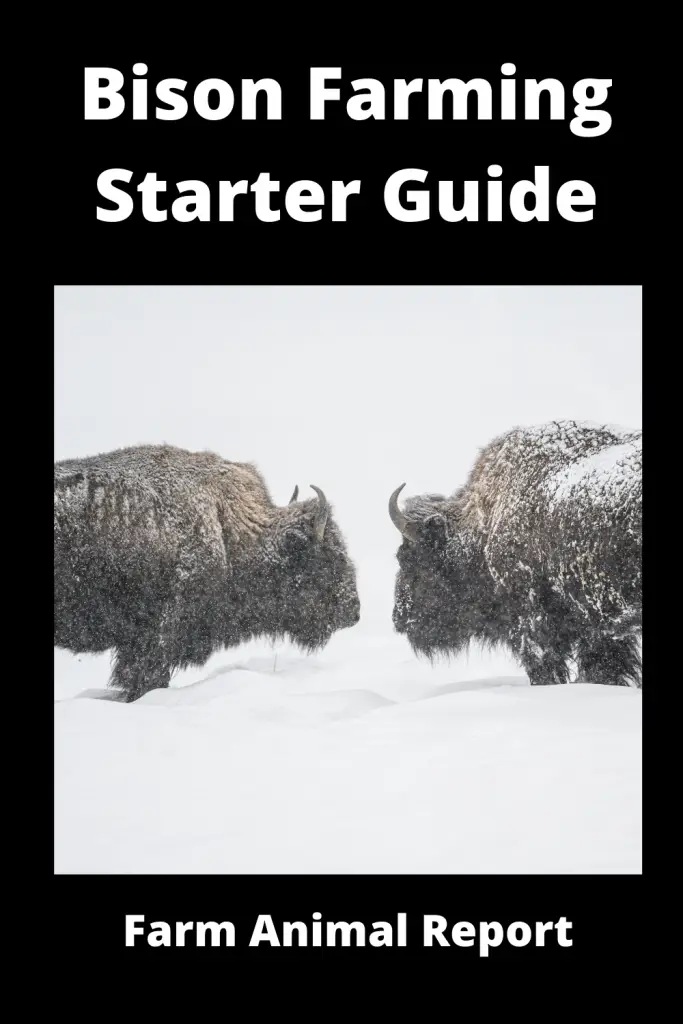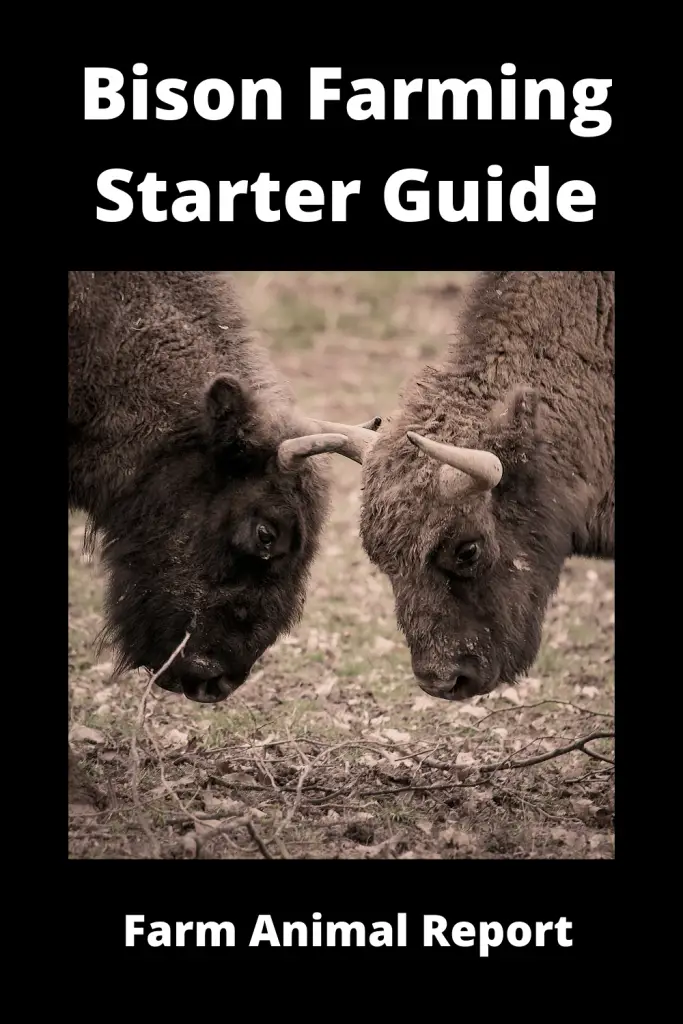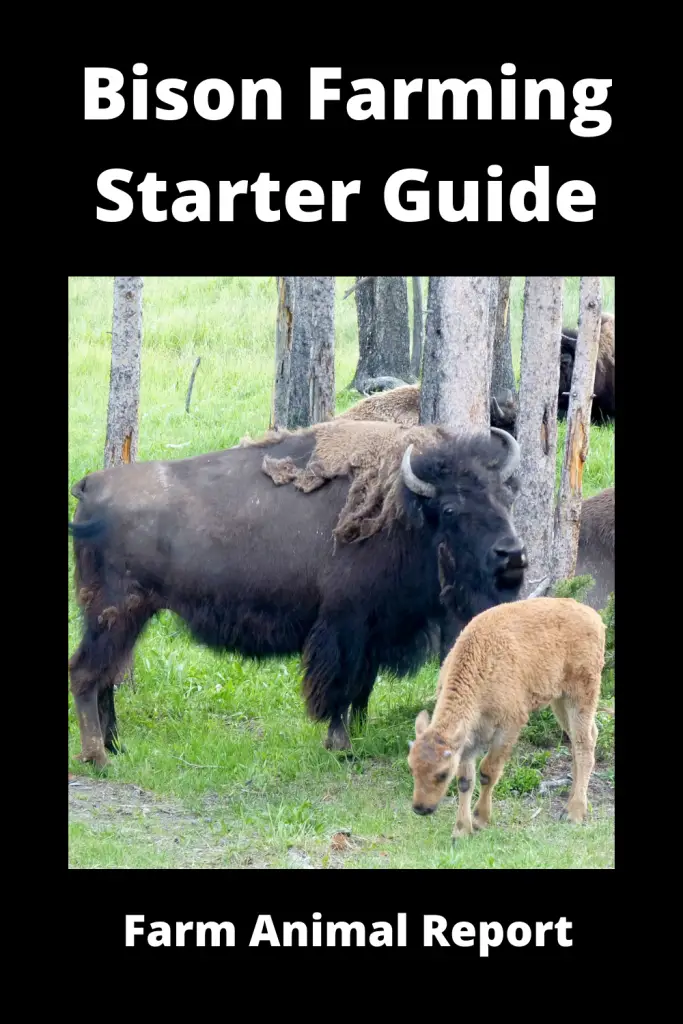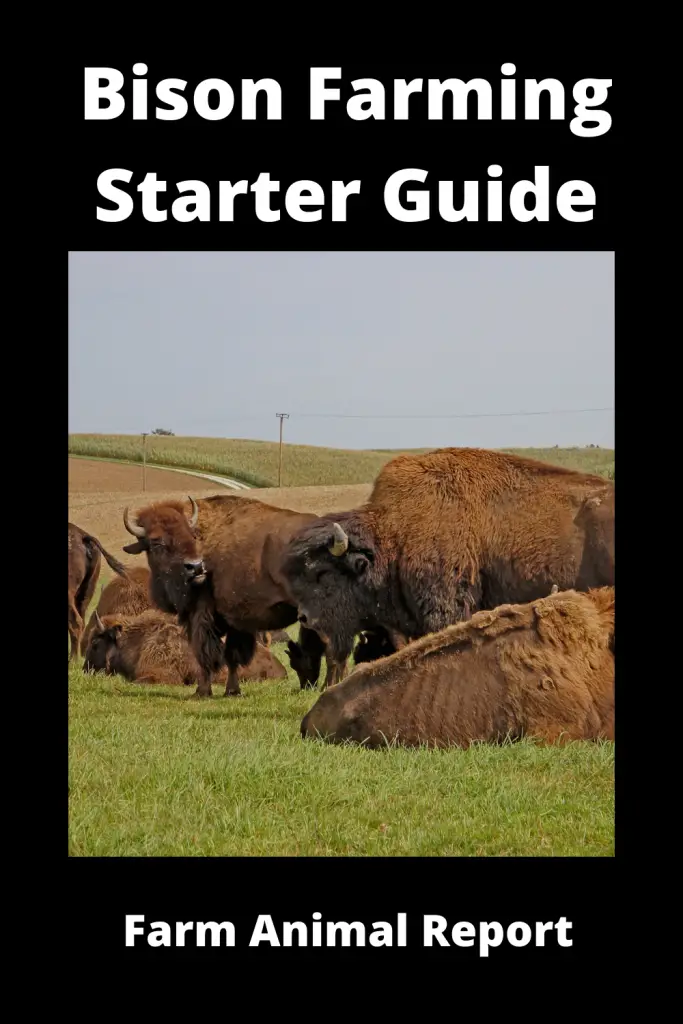Where Can I Buy Feed Bison
Bison Farming: Starting Guidelines for Raising Bison?
Bison Farming – Raising livestock has been an American tradition since the very foundation of the nation. With wide-open spaces and plenty of fertile pastures, a livestock farm can become a very profitable venture. Instead of raising beef or pork, like so many farmers do today, you could put an interesting twist on this business opportunity by starting a bison farm. Bison are highly prized because of the quality of the meat they produced. It has a higher protein content with lower cholesterol levels.
For More Educational Resources on Buffalo / Bison Check Out what Amazon Has to Offer
Bison is the fastest-growing meat market in the United States today, as more and more consumers discover the delicious taste and many health and environmental benefits for raising bison meat grew 17 percent, the fourth straight year of double-digit growth.
Bison also offers many benefits to ranchers. Due to their wild natures, they thrive best on minimal handling. They are hardier, more disease-resistant, and longer-lived than cattle. In general, bison cows have fewer birthing problems and are better mothers. Bison graze more efficiently than cattle and are better winter foragers, requiring less supplemental feeding.
Here are some things to think about if you're considering getting started in raising bison.
1. Develop a Business Plan: Bison Farming
The first step towards starting a successful bison farm is to draw up a business plan. What is your business plan? A business contains all the intricate details of how a business venture will function. It contains definite details of the business; like business goals, business structure, and business formation process.
In the case of a bison farm business, the business plan should contain basics like, the estimated capital you need to start the business, putting into consideration all the steps you will take in the training the bison from the calves stage to maturity, and how much each stage will cost for each bison multiplied by the number of bison that wish you grow in your farm.

2. Go for Training:
If this is your first time running a bison farm, then you may need to go for some extra training to learn how to take care of bison. A bison is not a domesticated animal and can be temperamental if not properly take care of.
It is for that reason that you need to know every detail involved in taking care of them. The best way to learn about this is to spend some months on a bison farm to familiarize yourself with the whole process of running a bison farm.
3. Raise Capital for your Business: Bison Producers
Starting a bison farm can be capital intensive; you need to have already calculated the capital requirement needed to start and float the business until you start getting returns. If the business structure will make provision for partners in the business, you can pull money together with your partner or partners to run the business.
Another place to source capital is via an angel investor. They only provide the capital involved in running the business without getting directly involved in the day-to-day running of the business. You can look out for the association of angel investors in your State and reach out to them with your business plan.
One or two angel investors may be wishing to invest in your business idea. If you decide to take a loan from the bank, you should consider the period that it will take a calf to grow into a mature bison ready for sale or to give birth to female species, to help your payment plan.

4. Buy a Farm:
This business ( owning bison herds) is a long-term business, so many require that you buy out your own land space to serve as your farm. You can also work out a long-term lease agreement if the capital you have cannot cover for out rightly buying off a land.
The piece of land that will serve as your farm should be a level ground and have plenty of pasture for your bison to graze on.
The amount of land that you have for your farm is going to dictate how many bison you can have. About 5 acres of land can support one or two fully grown bison. For a full herd, you may need to look at a purchase of land that is 100 acres or more.
5. Facilities:
One of the most common causes of failure in the bison herds industry is a lack of proper facilities. Tall strong exterior fencing is an absolute requirement before bringing a bison bulls to weigh up to 2000 pounds, yet can jump 5-6 feet from a standstill and may push or rub against fences and posts. The Texas Bison Association recommends seven-foot posts with high tensile wire. Fences in areas where the bison will be worked should be tall, sturdy, and easy to climb, for the safety of human handlers.
Just as important as good fencing is good stocking and management practices. A bison that gets it into its head to leave is a large and powerful enough animal that it might just find a way. With good pasture, water, and room to roam, bison are much more likely to stay put, and content bison are less likely than cattle to worry and challenge a fence.

You will need a combination of electric fencing, barbed wire, and a woven fence that stands at least 6 feet tall in order to adequately protect your livestock. Make sure you install a gate on every side of your perimeter just in case an animal gets loose so that you can quickly return it to where it needs to be.
6. Purchase Equipment for the Farm:
You need to order equipment that you will need to take care of your bison like a rake, shovel, barrow, water trowel. These are very basic important tools that must be purchased at first.
7. Pasture:
Bison can be stocked at about the same rate as cattle, even at slightly higher rates, because they are more efficient grazers. Bison spread out more evenly over pasture than cattle and can survive on the marginal range that would starve cattle, through in the interest of producing the finest product, this is not recommended.
Bison are happiest in large spaces. In the wild, bison move about two miles per day to graze. On a smaller acreage, bison can be kept happy through pasture rotation. The easiest way to move them is to open up the gates and let them move.
Ideally, the minimum herd size for bison should be about 12-15 animals, due to their extremely strong herding instinct. A lone bison will jump or tear down fences to get to other bison, cattle, horses, or even sheep in order to satisfy its need for a herd.
8. Supplement the Diet:
Not all of the pasture land that is available to you may be suitable for bison grazing. This doesn't mean that you have to reduce your herd size. It just means that you will need to supplement the diet of your livestock with grain.
Bison meat that has been raised from grains is just as suitable for human consumption as meat that has been raised from natural grazing.
9. They are Social Animals: Bison's Rugged Nature
You will not find success in bison farming unless you establish a herd. Bison are unique because they are extremely social animals. Bison might appear large and slow even cuddly, but in fact, they are capable of sustaining speeds of 35-40 miles per hour for several miles, can jump 5-6 feet in the air from a standstill, and can change directions from both their front and hindquarters. They are very fast and very agile and quite capable of trampling or goring a human being if distressed or angered.
If they are alone, then they are going to feel insecure. And insecure bison is not going to provide you with a high quality of meat when it is time to take the animal to the sale. This means that you will need to plan on at least having a dozen bison to establish your first herd. Inland terms, that would about 30 acres at the minimum would be required.

10. Start Young:
If you have never been involved in livestock farming before, then think of a bison farm as a long-term investment venture. The easiest way to get started is to invest in some bison calves. Calves are easier to manage and full-grown adults and have better temperatures as well. This will help get new farmers acclimated to the business environment of growing bison and help the animals get familiar with you as they begin to grow up. Adult bison can be hard to handle if you have never experienced an angry bison before.
11. Employ Workers:
You cannot possibly run a bison farm alone, you will need some helping hands to take care of every aspect of taking care of your calves daily. You can employ a bison trainer to help your calves from the early stage to make them more violent. Workers used to handle difficult livestock are a plus.
12. Be Careful with Marketing:
Marketing your bison meat can be a tricky proposition. One of the best places to get started would be through a marketing cooperative that is in your local area. Working together with other farmers, you can all get your products placed on store shelves in front of customers who want to purchase them. You might also consider creating farm shares where people can invest now in bison meat and then you deliver that meat at the end of the season.
13. No rest for the Weary:
Bison farming is more than a full-time job. It is something that you have to do on a daily basis, around the clock, and sometimes in the middle of the night.
Although there are fewer challenges in this livestock farming than there would be for a dairy herd of cattle, you still need to invest a lot of time for proper care. This means most of your day is going to be spent in the outdoors, working on your farm, or marketing the products of your farm to the local community.
14. Plan on Spending some Cash:
If you need to purchase bison calves, then you need to expect to spend some cash. The average bison calf that is specifically intended for meat will sell for around $1800 per head. You will also want to consider heifer calves so that you can expand your herd naturally over time. These calves typically sell about $2400 per head. Because you need a dozen cabs to get a bison farm started at a minimum, you will need to plan on a mid-level five-figure investment to get going. That is around $30,000 in starter Stock. You may then need to plan on purchasing extra calves over the next few years to supplement your herd.
15. That's a lot of money:
The average will cost about two dollars a day to maintain. A fully grown adult bison has an $800 per year annual maintenance cost. This includes feed, veterinary care, and other associated tasks that may be necessary for the health of the animal. If you start with calves, and your primary source of income will be bison, then you will be spending money without any revenues coming in for quite some time.
Bison farming can be enormously rewarding when it is done correctly. By following these tips to start your own bison farm, you will be able to enjoy rural life and have a profitable time while doing so.
16. Health program:
A proper health program requires an identification system. This also goes hand with good records.
The key to any good health program is preventive medicine. Vaccinate and worm your bison regularly. Just like cattle, bison need to be vaccinated against common diseases such as brucellosis. Your local veterinarian will stock these vaccines and you can ask them to do a farm call to your location to help vaccinate the herd. You will need corrals and a chute to safely vaccinate the bison. They can also be wormed during this procedure.
Extra Resources
- Texas Bison Association
- National Bison Association
- Bison Farms
- Western Bison Association
- Rocky Mountain Bison Association
- Northwest Bison Association
- Eastern Bison Association
- Nationwide National Bison Association
Source: https://www.farmanimalreport.com/2020/04/20/bison-farming-starter-guide-15-things-youll-need/

Post a Comment for "Where Can I Buy Feed Bison"